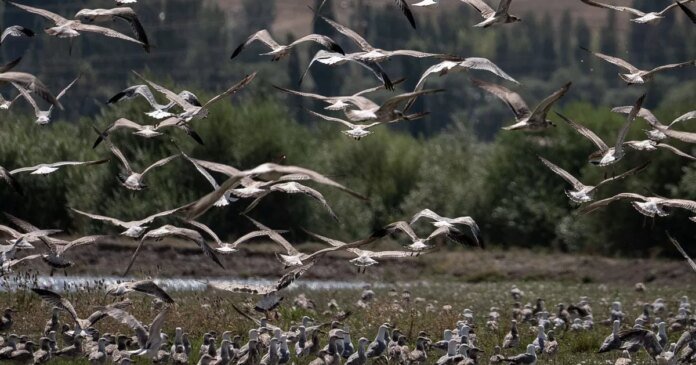Concerns have been raised globally as birds exhibit unusual behavior, disrupting the delicate balance of nature and posing risks to food sources and medicinal plants.
Scientists have observed a deviation from normal migration patterns among birds in the US due to the influence of global warming on temperature cues that guide their movements away from colder climate zones.
Andrew Farnsworth, a researcher at Cornell University, has issued a warning that altered migration routes could result in the extinction of numerous bird species, disrupting ecosystems and natural equilibrium permanently.
Birds play a vital role in the environment by pollinating plants and controlling pests, with approximately five percent of plants essential for human consumption and medicine relying on birds for pollination.
Farnsworth, an expert in migration ecology, attributes the behavioral changes in birds to escalating temperatures in regions like the Arctic and northern forests, compounded by climate change-related issues such as wildfires that endanger bird populations.
The National Audubon Society has cautioned that 389 bird species in North America face a high risk of extinction within the next five decades.
Rising temperatures have disrupted seasonal transitions, causing birds in warmer regions to leave their nests earlier or later than usual, resulting in mismatches with food sources at breeding or feeding grounds.
This can lead to starvation, habitat inadequacy, and challenges in finding mates, ultimately reducing bird populations as fewer birds survive harsh winters.
Several bird species in the US, including the Black-throated Blue Warbler, Red Knot, and Swainson’s Thrush, have already felt the impact of these altered behaviors.
Researchers at Audubon have reported declines in Black-throated Blue Warbler populations in the US due to climate shifts, leading to reduced food availability post-migration.
Red Knot populations, a type of shorebird, have plummeted by approximately 75 percent, with warming Arctic temperatures disrupting their breeding areas and rising sea levels shrinking their coastal foraging zones, as per findings from the Cornell Lab.
The Swainson’s Thrush, migrating from Canada and Alaska to Central and South America for winter, is facing habitat loss due to climate-induced changes in wildfire-prone areas and warming forests along their migratory routes.
This has resulted in the destruction of nesting and resting sites in states such as California, Oregon, Washington, New York, Maine, and Colorado.
<p class="Paragraph_paragraph-text__PVK

